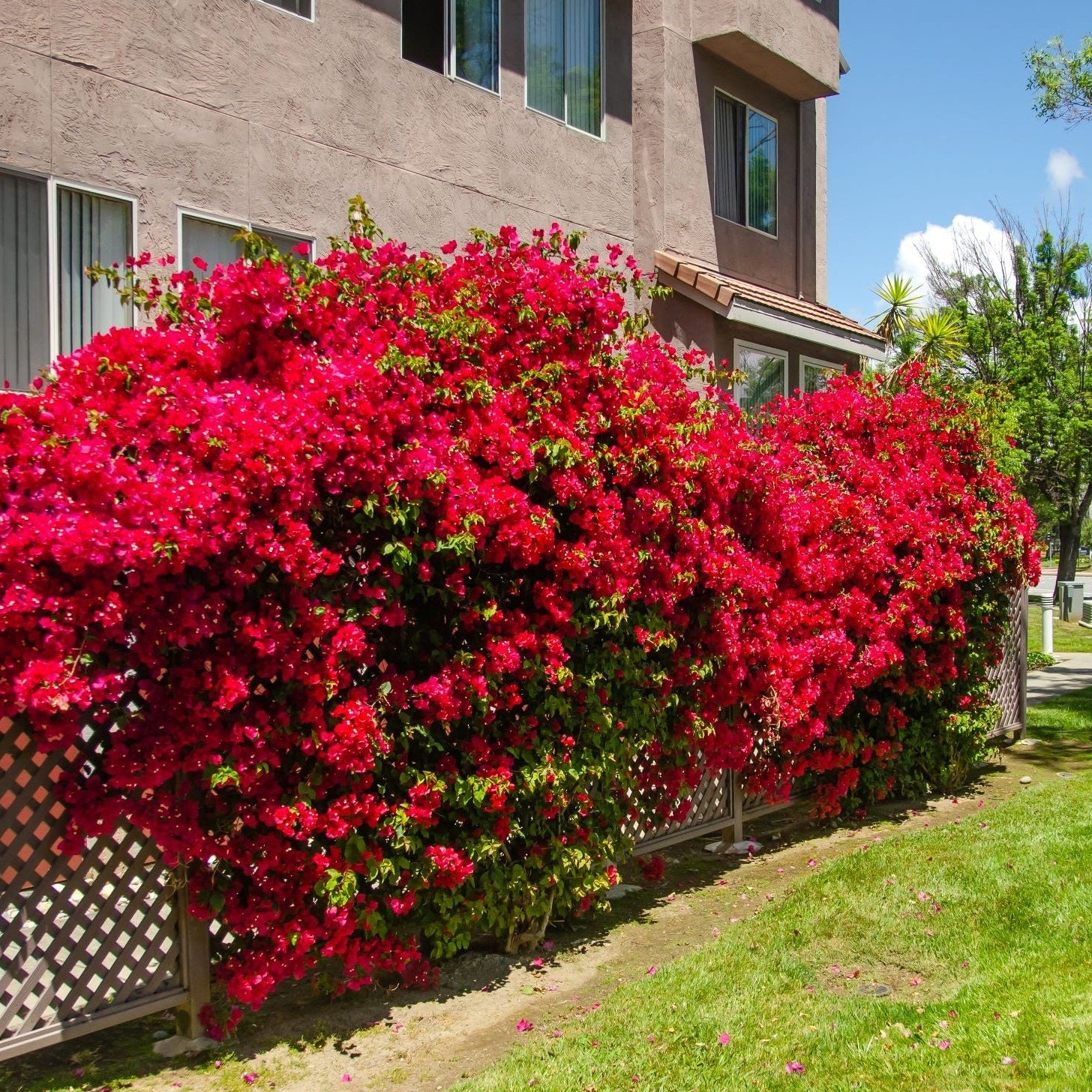The Stunning World of Bougainvillea: More Than Just Pretty Flowers
Ever seen those explosively colorful vines cascading over walls or trellises, especially in warmer climates? Chances are, you’ve been wowed by a Bougainvillea! These plants are real showstoppers, adding a tropical vibe wherever they go. But there’s more to these beauties than just their vibrant appearance. Let’s dig into the fascinating world of Bougainvillea.
Not Actually Flowers?! Mind. Blown.
Here’s a fun fact that often surprises people: those intensely colored parts of the Bougainvillea aren’t actually flowers! They are specialized leaves called bracts. The real flowers are tiny, usually white or yellowish, and tucked away inside these colorful bracts. The bracts are what put on the dazzling display, attracting pollinators like bees and butterflies with their bright hues. Think of them as the plant’s way of shouting, “Hey, look over here!”

A Climber and a Sprawler: Versatility is Its Middle Name
Bougainvillea is a woody vine, which means it has a natural tendency to climb. Give it a support structure like a trellis, pergola, or even a wall, and it will happily scramble its way upwards, creating a stunning vertical garden. However, if you don’t provide support, it can also happily sprawl out, making it a fantastic ground cover or a cascading plant for slopes and banks. This versatility makes it a popular choice for gardeners looking to add a splash of color in various ways.
Tough Cookies: Resilience in the Sunshine
These plants are sun worshippers through and through. They thrive in full sunlight, needing at least six hours of direct sun each day to really put on their best floral (or rather, bract) show. They’re also surprisingly drought-tolerant once established. This makes them a great option for gardeners in warmer, drier regions who are looking for low-maintenance beauty. While they appreciate regular watering, they don’t like to sit in soggy soil, so good drainage is key.

A Rainbow of Colors: Something for Everyone
One of the most appealing things about Bougainvillea is the sheer variety of colors they come in. You can find them in vibrant shades of pink, purple, red, orange, yellow, and even white. Some varieties even offer a mix of colors on the same plant, adding an extra layer of visual interest. This wide color palette allows gardeners to choose the perfect Bougainvillea to complement their landscape and personal style.
Pruning Power: Shaping Your Bougainvillea
To keep your Bougainvillea looking its best and to encourage more of those beautiful bracts, pruning is your friend. Regular light pruning helps to maintain its shape and size. A more significant pruning can be done after a major bloom cycle to encourage new growth and another flush of color. Don’t be afraid to get in there with your pruning shears – Bougainvillea is generally quite forgiving.
A Touch of the Tropics: Where They Feel at Home
Bougainvilleas are native to tropical and subtropical regions of South America. This explains their love for sunshine and their tolerance for warmer temperatures. While they can be grown in slightly cooler climates, they are generally not frost-hardy and will need protection or to be brought indoors during cold winters. If you live in a colder region, consider growing them in containers so you can move them to a sheltered spot when the temperatures drop.
More Than Just Looks: Other Uses
Beyond their ornamental value, Bougainvilleas have been used in traditional medicine in some cultures. Different parts of the plant have been used for various purposes, although it’s important to note that these uses are not scientifically proven and caution should always be exercised. The vibrant bracts are also sometimes used for decorative purposes.
A Symbol of Passion and Beauty
In many cultures, the Bougainvillea is seen as a symbol of passion, beauty, and vitality. Its vibrant colors and vigorous growth can certainly evoke these feelings. Whether you’re aware of the symbolism or simply appreciate its visual appeal, there’s no denying the impact of a well-grown Bougainvillea.
In Conclusion
The Bougainvillea is truly a remarkable plant. Its dazzling display of colorful bracts, its versatile growth habit, and its resilience in sunny conditions make it a favorite among gardeners worldwide. While those vibrant hues aren’t technically flowers, they certainly put on a show that rivals any bloom. Whether you’re looking to add a tropical touch to your garden, create a stunning vertical display, or simply enjoy a burst of color, the Bougainvillea is a fantastic choice that’s sure to bring joy and vibrancy to your outdoor space.
Frequently Asked Questions About Bougainvillea
How often should I water my Bougainvillea?
Once established, Bougainvillea is quite drought-tolerant. Water deeply when the top inch or two of soil feels dry. Avoid overwatering, as this can lead to root rot. During hot, dry periods, you may need to water more frequently.
Why isn’t my Bougainvillea flowering?
Lack of sunlight is a common reason for poor flowering. Ensure your plant is getting at least six hours of direct sun per day. Over-fertilizing, especially with high-nitrogen fertilizers, can also encourage leafy growth at the expense of flowers. Try a fertilizer higher in phosphorus to promote blooming. Also, remember that the “flowers” are actually bracts, so you’re looking for those colorful leaf-like structures.
Can I grow Bougainvillea in a pot?
Absolutely! Bougainvillea does well in containers, especially in regions with colder winters where you need to bring them indoors. Choose a pot with good drainage and use a well-draining potting mix. You may need to water container-grown plants more frequently than those in the ground.
Are Bougainvillea plants messy?
Bougainvillea can drop some leaves and spent bracts, especially after a heavy bloom cycle. However, they are not generally considered excessively messy compared to other flowering vines. Regular light pruning can help to manage any shedding.
Are Bougainvillea thorns poisonous?
Bougainvillea Plant
